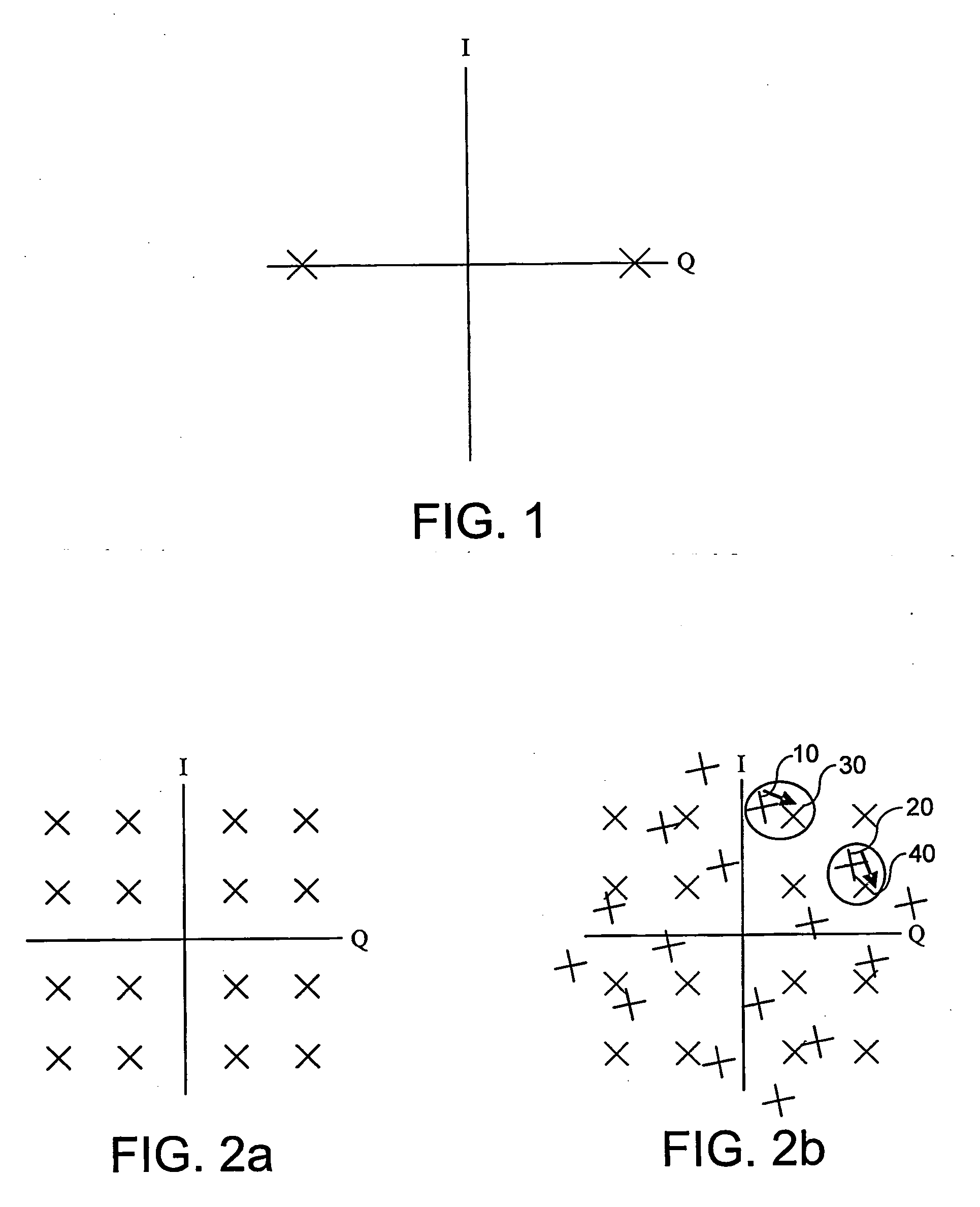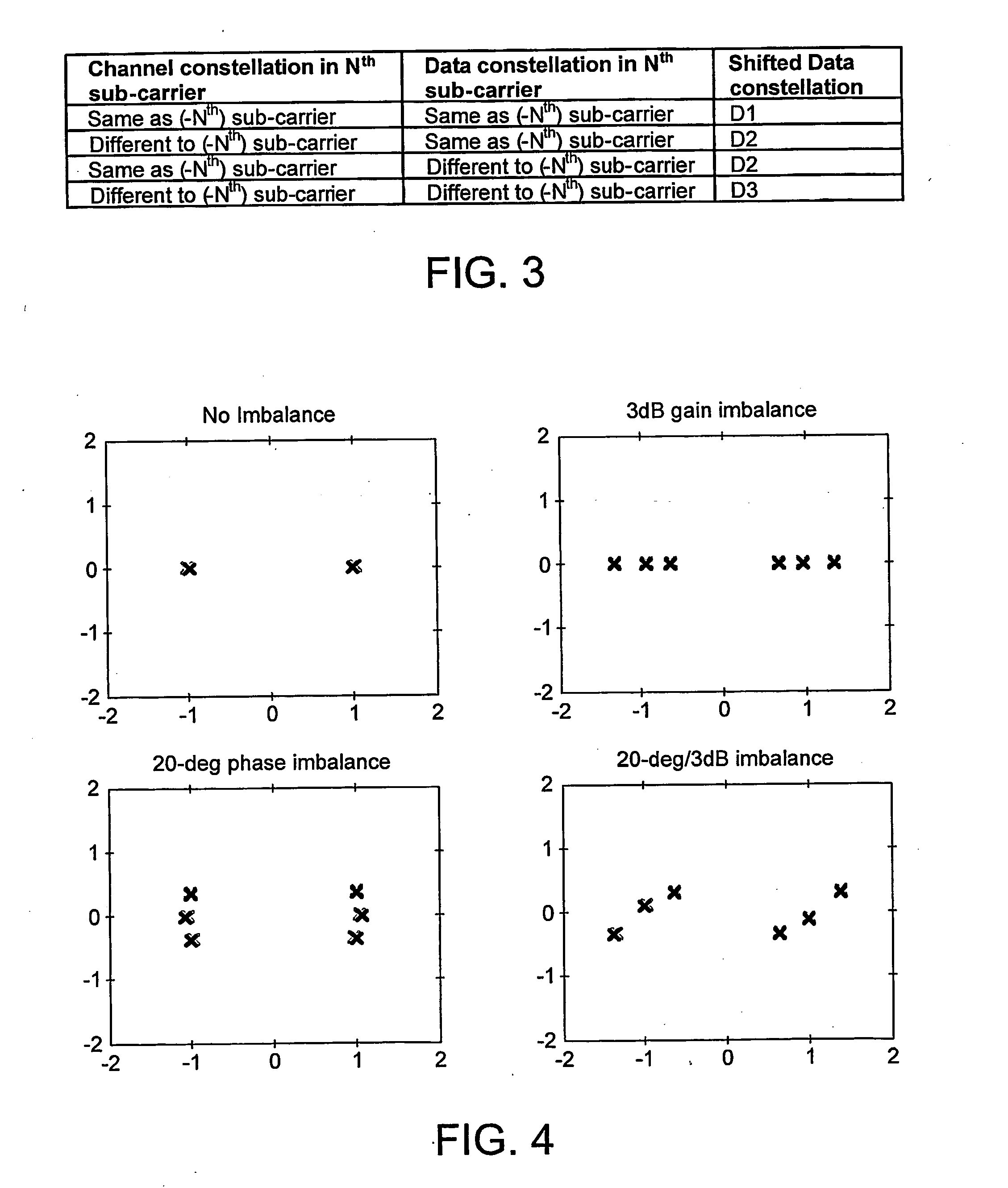Method of Determining True Error Vector Magnitude in a Wireless Lan
a wireless lan and error vector technology, applied in the field of determining can solve the problems of affecting the accuracy of the measurement method, and the procedure is thus relatively time-consuming, so as to achieve the effect of faster and cheaper measurement of the true error vector magnitud
- Summary
- Abstract
- Description
- Claims
- Application Information
AI Technical Summary
Benefits of technology
Problems solved by technology
Method used
Image
Examples
Embodiment Construction
[0025]It can be shown that, in the presence of systematic transmit IQ phase and amplitude imbalances in the transmit chain, the roots of the constellation diagram for a Binary Phase Shift Keyed (BPSK) signal are shifted in the frequency domain to one of the following two possible new positions:
c1=k1(cos(ψ)+sin(ψ))·cc2=k2(cos(ψ)-sin(ψ))·cwherek2=2 / (1+ge);k1=k2·ge;ψ=θ2
where c is the original constellation position (+1 or −1) and ge &θ are the IQ gain phase errors respectively.
[0026]Whether a point in a constellation is shifted to c1 or c2 is dependent on the value of the sub-carrier and its corresponding negative sub-carrier. For example, in BPSK, the constellation point represented by sub-carrier 26 is shifted dependent on the value of the sub-carrier −26. If the values in sub-carrier 26 and −26 are identical, then the constellation points are shifted to location c1. If the values in 26 and −26 are different, the constellation points are instead shifted to c2 in the IQ diagram.
[0027]...
PUM
 Login to View More
Login to View More Abstract
Description
Claims
Application Information
 Login to View More
Login to View More - R&D
- Intellectual Property
- Life Sciences
- Materials
- Tech Scout
- Unparalleled Data Quality
- Higher Quality Content
- 60% Fewer Hallucinations
Browse by: Latest US Patents, China's latest patents, Technical Efficacy Thesaurus, Application Domain, Technology Topic, Popular Technical Reports.
© 2025 PatSnap. All rights reserved.Legal|Privacy policy|Modern Slavery Act Transparency Statement|Sitemap|About US| Contact US: help@patsnap.com



